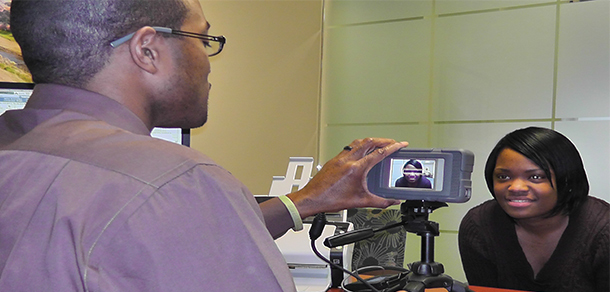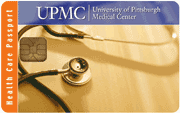Medical Identity Theft Drives Biometrics In Health Care
24 July, 2015
category: Biometrics, Corporate, Digital ID, Health
Reducing wait times and errors
M2Sys Technology says its RightPatient platform is in use – or will be soon – at more than 70 locations.
North Carolina-based Novant Health came onboard as a client in August 2013. The not-for-profit health care system operates 15 hospitals, 350 clinics and additional care facilities in four states. It deployed iris scanning technology in its hospitals, along with some rehab clinics and outpatient surgery centers.
“We were on a journey to change our overall IT platform for all of our patients and saw the need to ensure that their identities and medical records were protected,” says Melanie Wilson, Novant’s vice president of Revenue Cycle. “So we started looking at the various forms of biometric data and really thought that RightPatient met all the criteria that we were looking for.”
The company is already experiencing improved patient wait times and fewer errors involving medical records. “We do expect to see some financial improvement just from the decrease in duplicate medical records and fraud,” Wilson adds.
Ease of use is a bonus. The patient stands a foot away from the camera, making the iris scan noninvasive and contactless. “There’s no red laser that’s shot into anybody’s eye,” Trader says, referring to some misconceptions in the marketplace. “You just take a picture of the patient. We utilize the information to match you and retrieve your medical records.”
Wilson admits there were concerns that patients would resist the iris scan and complain about privacy issues, but these concerns proved to be unfounded. “Once patients understand fully what the benefit is to them and how easy the system is to use, they’re very quick to get on board with it,” she says.
Fingerprints eliminate duplicate records
While M2Sys enables mutiple biometric modalities for identification, CrossChx is focused on fingerprints, says Sean Lane, co-founder of the two-year old company.
We help health care organizations resolve duplicate records by adding a fingerprint biometric to each record that can be retrieved from a health care provider using the system, says Lane. The company’s solution is deployed at 54 hospitals across seven states. It has enrolled some 8.5 million patients and processed more than 1 million patient verifications to date.
Holzer Health System was the first company to deploy the CrossChx system, says Brent Saunders, CEO at the health care provider. The organization’s 150 physicians serve more than 500,000 patients a year at locations in Ohio and West Virginia.
The goal with the project was to make sure that patients were correctly identified, Saunders says. The primary concern out of the gate was to make sure that patients didn’t feel alienated with the fingerprint scanner. “We came up with a script that our registration staff used and indicated to patients that this was for their protection,” he explains. “The refusal rate was very low and has gone even lower since.”
Once a health care provider signs on with CrossChx, the company runs an algorithm on its patient records, Lane says. It looks at names, addresses, dates of birth and other factors to spot duplicate records. If suspected duplicate records are spotted they are flagged for further review.
For the biometric portion of the program, arriving patients enroll their fingerprint and it is linked to the medical record. During future visits, patients are authenticated with the fingerprint. Patients can choose to opt out of the system but once they are told it’s for their protection the vast majority agree to participate, Lane says.
While other companies offer other biometric modalities, CrossChx is sticking with fingerprint. “Fingerprints are well accepted and less likely to change over time,” Lane says.
Once a patient is enrolled in the biometric system, it is impossible to utilize someone else’s identity from that point forward
He envisions a global CrossChx system where patients records are securely accessible by physicians across the country.
Health care securing patient identity and data
Education is key when it comes to explaing these systems to patients. “The use of biometrics for patient authentication is still relatively nascent,” Trader says. “As much as this is a solution to boost patient safety, reduce duplicates and mitigate fraud, it’s also a mechanism to protect our identities from being stolen. This is a platform that can be utilized as a strong authentication tool on the front end to help better protect access to clinical data.”
Electronic medical records are becoming the norm, enabling organizations across the country to integrate health information. “If I’m a patient and I am traveling out of the service area where my healthcare provider may be, eventually the goal would be that all of my health care information travels with me,” Wilson says. “I hope to see more health care providers taking steps toward the utilization of biometrics because it’s the one true way of securing data for patients.”
The potential to extend secure access to records outside of the medical office is also growing. A mobile device could be used to log into a patient portal, for example, and the biometric could be checked via the handset. “Our facial recognition engine can be leveraged in mobile areas for front end strong authentication,” Trader says.
Trader says health care systems that want to prevent duplicate medical records need to be able to perform real-time, one-to-many searches where a patient could be identified and authenticated just by providing his biometric information.
At Novant Health, patients are encouraged – but not required – to provide a biometric. “Part of the training program focuses on how to explain to the patient what you’re doing and the benefits associated with it,” Wilson says. “Through just that explanation – this is why we’re doing this, this is why this is important to you, and this is the benefit that it offers you – our patients immediately go from being concerned to being grateful for this investment in their protection.”
“When they walk in the door, patients aren’t having to recapture information that was already captured at another location,” Wilson says. “Via biometrics, we can pull that patient account up immediately and have all of their information there and available.”




